Daughter Xenia and I went to an alpaca farm today. Here are some of the pictures:
The two pictures below were taken at the same time. The one on the left by Xenia and the one on the right by me:
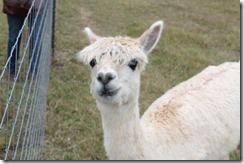
They have a variety of colors and some enjoy having their neck scratched (neck scratch photo by Xenia):

They have some very odd (to me) toes: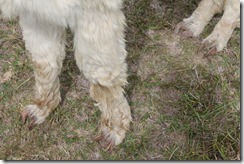
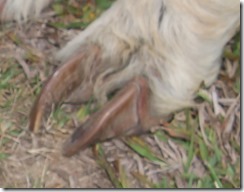
They are raised primarily for their fiber. It has some interesting characteristics (from Wikipedia):
Alpaca fiber is used for making knitted and woven items, similar to wool. These items include blankets, sweaters, hats, gloves, scarves, a wide variety of textiles and ponchos in South America, and sweaters, socks, coats and bedding in other parts of the world. The fiber comes in more than 52 natural colors as classified in Peru, 12 as classified in Australia and 16 as classified in the United States.
…
Alpaca fleece is a lustrous and silky natural fiber. While similar to sheep’s wool, it is warmer, not prickly, and bears no lanolin, which makes it hypoallergenic. Without lanolin, it does not repel water. It is also soft and luxurious. In physical structure, alpaca fiber is somewhat akin to hair, being very glossy. The preparing, carding, spinning, weaving and finishing process of alpaca is very similar to the process used for wool. Alpaca fiber is also flame-resistant, and meets the US Consumer Product Safety Commission’s standards.
Flame-resistant? Wow.
We saw people carding, spinning, and weaving the fiber: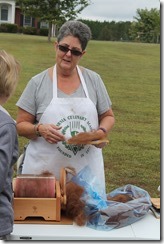
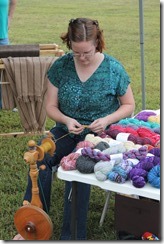

Alpacas have been domesticated for thousands of years and I found them to be far more interesting than I expected.

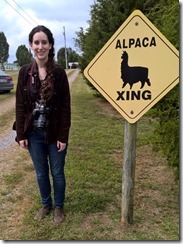

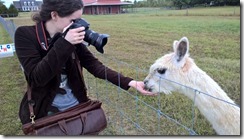
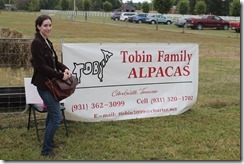
We looked at a couple of these mini-camels during the MN state fair- Thinking about adding some to the menagerie. Very nice fiber, the fleeces are worth serious ca$h, even before processing-